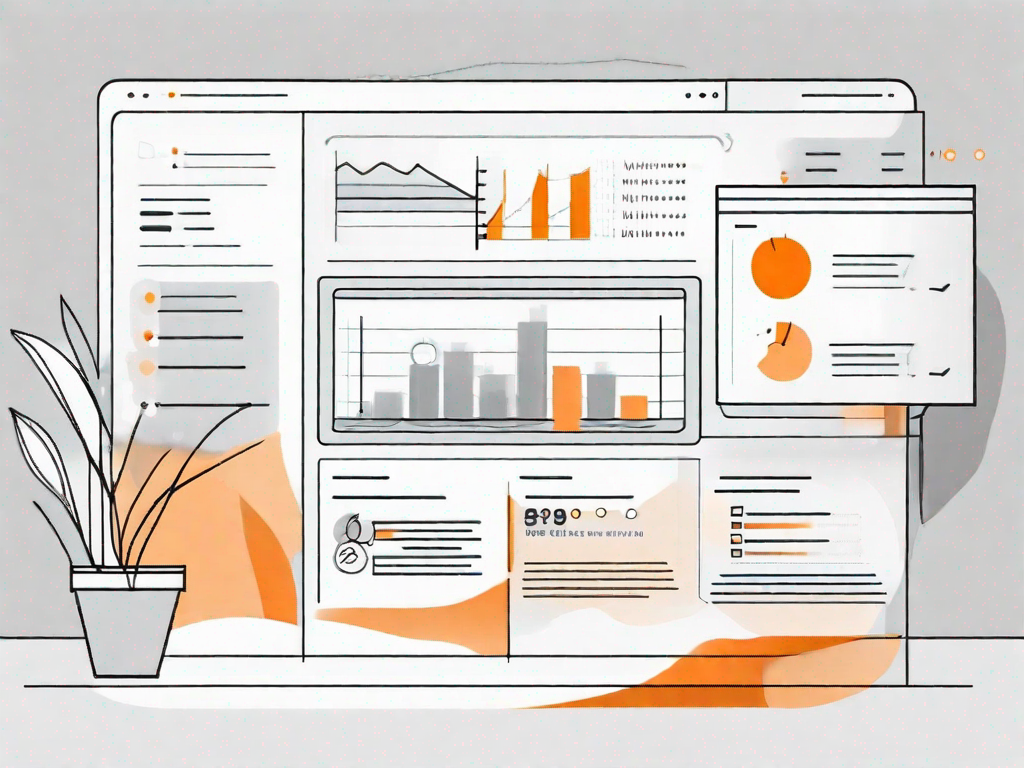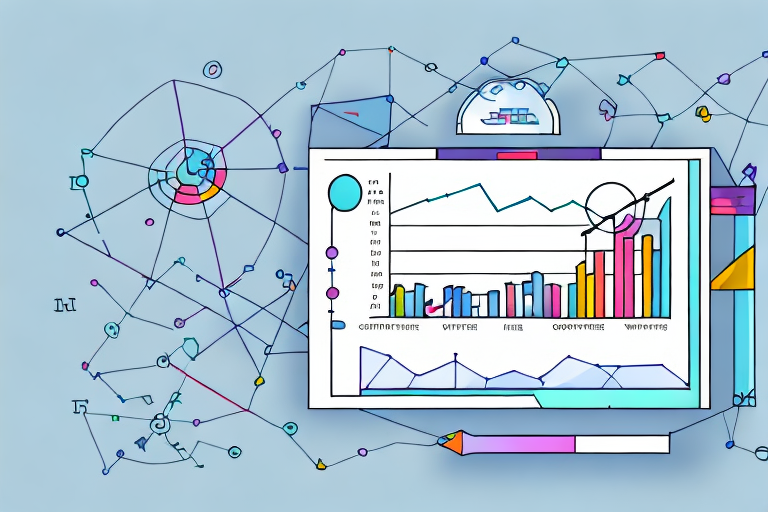.svg)
How to integrate Google Analytics with Webflow
.svg)

In today's digital age, having a well-designed website is crucial for any business or individual looking to establish their online presence. However, simply having a website is not enough. It is equally important to track and analyze the performance of your website to understand how users are engaging with your content. This is where Google Analytics comes in. In this article, we will explore the process of integrating Google Analytics with Webflow, a popular web design and development platform, to harness the power of data and gain valuable insights into your website's performance.
Understanding the Importance of Google Analytics
Before diving into the integration process, it is essential to understand why Google Analytics is such a valuable tool for website owners. Google Analytics provides comprehensive data and analytics about your website's visitors, including their demographics, behavior, and conversion goals. By analyzing this data, you can make informed decisions to improve your website's performance, enhance user experience, and drive more conversions.
The Role of Google Analytics in Web Traffic Analysis
One of the primary purposes of Google Analytics is to help you understand your website's traffic. Through various metrics such as sessions, pageviews, and unique visitors, you can gain insights into how many people are visiting your website and how frequently. Additionally, Google Analytics provides data on the source of your traffic, helping you identify which channels are driving the most visitors to your site, such as organic search, social media, or referral links.
Benefits of Integrating Google Analytics with Your Website
Integrating Google Analytics with your website offers numerous benefits. First and foremost, it provides invaluable insights into your website's performance. By tracking metrics such as bounce rate, average session duration, and pages per session, you can gauge user engagement and identify areas for improvement. Moreover, Google Analytics allows you to set up conversion goals, such as newsletter sign-ups or purchases, and track their performance, enabling you to measure the effectiveness of your marketing efforts and optimize your website accordingly.
An Overview of Webflow
Before we proceed with the integration, let's take a moment to understand what Webflow is. Webflow is a visual web design and development platform that empowers users to create beautiful, responsive websites without the need for coding. With its intuitive drag-and-drop interface and extensive design capabilities, Webflow has gained popularity among web designers and developers worldwide.
What is Webflow?
Webflow is a fully visual tool that allows users to design, build, and launch websites using a code-free approach. It provides an intuitive interface where you can create custom layouts, style elements, and add interactions using its powerful designer and CMS features. Whether you are building a simple landing page or a complex e-commerce site, Webflow offers the versatility and flexibility to bring your vision to life.
Key Features of Webflow
Webflow comes equipped with a range of impressive features that make it a preferred choice for many web designers and developers. Some key features include:
- Responsive Design: Webflow ensures that your websites look great on any device, allowing you to create dynamic layouts that adapt seamlessly to different screen sizes.
- Custom Interactions: With Webflow's interactions panel, you can easily add animations, hover effects, and other engaging interactions to your site, enhancing user experience.
- Content Management System (CMS): Webflow's CMS functionality enables you to create and manage dynamic content, making it ideal for websites that require frequent content updates.
- E-commerce Capabilities: Webflow has robust e-commerce features, allowing you to create online stores, manage products, and process payments securely.
Setting Up Google Analytics Account
Before integrating Google Analytics with Webflow, you need to have a Google Analytics account. If you already have an account, you can skip this section and proceed to the next one. If not, let's walk through the process of creating a Google Analytics account.
Step-by-Step Guide to Creating a Google Analytics Account
Creating a Google Analytics account is a straightforward process. Follow these steps to get started:
- Go to the Google Analytics homepage and sign in with your Google account credentials.
- Click on the "Start for free" button to create a new Google Analytics account.
- Provide the necessary information, such as your account name, website name, and website URL.
- Agree to the terms of service and click "Next."
- On the next screen, you will be provided with a unique Google Analytics tracking ID. Make sure to copy this ID as you will need it later during the integration process.
- Complete the remaining steps to configure your account settings and finalize the creation of your Google Analytics account.
Understanding Google Analytics Dashboard
Once you have set up your Google Analytics account, you will be redirected to the Google Analytics dashboard. The dashboard serves as the central hub where you can access all the analytics data and reports for your website. It provides an overview of key metrics, including real-time visitors, audience demographics, and acquisition sources. Familiarize yourself with the various sections and reports available in the Google Analytics dashboard to make the most of the insights it provides.
Integrating Google Analytics with Webflow
Now that you have your Google Analytics account ready, let's proceed to the integration process with Webflow. Integrating Google Analytics with Webflow is a straightforward process that involves adding your Google Analytics tracking ID to your Webflow project.
Locating Your Google Analytics Tracking ID
To locate your Google Analytics tracking ID:
- Sign in to your Google Analytics account.
- Click on the "Admin" tab in the lower-left corner of the dashboard.
- Under the "Property" column, click on "Tracking Info" and select "Tracking Code."
- Your Google Analytics tracking ID will be displayed at the top of the page. It typically starts with "UA-" followed by a string of numbers.
- Make a note of your tracking ID as you will need it in the next step.
Adding Your Google Analytics Tracking ID to Webflow
To add your Google Analytics tracking ID to Webflow:
- Sign in to your Webflow account and navigate to your project's dashboard.
- Select the project for which you want to add Google Analytics integration.
- Click on the "Project Settings" tab in the left sidebar.
- Scroll down and find the "Google Analytics" section.
- Paste your Google Analytics tracking ID into the "Google Analytics Tracking ID" field.
- Save your changes and publish your website for the integration to take effect.
Verifying the Integration of Google Analytics with Webflow
Once you have added your Google Analytics tracking ID to Webflow, it is crucial to verify that the integration is successful and working correctly. Let's explore a few steps to ensure that Google Analytics is properly tracking your Webflow site.
How to Check If Google Analytics Is Working on Your Webflow Site
To check if Google Analytics is tracking your Webflow site:
- Open your Webflow site in a new browser tab or window.
- Navigate to a page on your site that you want to track.
- Return to your Google Analytics dashboard and click on the "Realtime" tab in the left sidebar.
- Under "Realtime," select "Overview."
- You should now see your own visit listed under "Active Users" if Google Analytics is tracking correctly.
Troubleshooting Common Integration Issues
If you encounter any issues during the integration process or face discrepancies in the tracking data, here are a few troubleshooting steps to consider:
- Double-check that you have correctly entered your Google Analytics tracking ID in the Webflow project settings.
- Ensure that you have published your Webflow website after making changes to the project settings.
- Verify that the tracking code snippet is present in the source code of your Webflow website. You can do this by inspecting the website's code or using browser extensions.
- Consider clearing your browser cache and cookies and repeating the steps to verify the integration.
- If all else fails, reach out to the Webflow support team or consult the Google Analytics documentation for further assistance.
In conclusion, integrating Google Analytics with Webflow is a simple yet effective way to gain insights into your website's performance. By harnessing the power of data, you can make informed decisions to optimize your website, enhance user experience, and achieve your goals. With the step-by-step guide provided in this article, you can seamlessly integrate Google Analytics with your Webflow site, ensuring that you have the tools you need to succeed in the competitive online landscape.
Let's
Let’s discuss how we can bring reinvigorated value and purpose to your brand.







.svg)